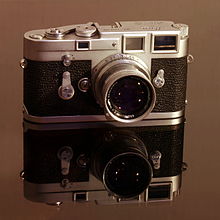Apple, Inc., is currently running a series of extremely beautiful commercials whose theme is quite simple: “Every day, more pictures are taken on an iPhone than any other camera”. This is marketing at its very highest level. An overpriced telephone is facing severe competition from a number of directions, so pitch it instead as a camera. And use honest “facts” so that no one can accuse you of lying about anything. Fair enough.
There is a hook, however. The iPhone is a portable communication device which happens to include a fixed focus, fixed aperture, lens and a light sensor, which can write to the same memory in the unit on which you also store your contacts, your saved messages, your music and miscellaneous data. It is not really a camera, not even a camera in the sense of Geoorge Eastman’s legendary Box Brownie of 1890. The iPhone is being used, and touted, for the same usage as the old Kodak. It is capable of satisfying the need for a simple record of an event or a place at a moment in time. That is no small matter; humans, even Neandertals, have been satisfying that need for thousands of years in some form or another. The Kodak Brownie was the first mass market device to do so, and people have been saving and collecting this type of image for more than a hundred years, to a degree not ever imagined by our forebears.
You may remember that the Brownie also had a fixed focus, fixed aperture, fixed focal length lens just like the iPhone. The recording “sensor” was a strip of film long enough to retain 100 photos, which were processed into black and white prints and returned to you with a “new” camera with a fresh roll of film. Just like the iPhone, given enough light, you got a picture which you could pass around among your friends and family, store in an album, or lose. Ofttimes, all three things happened to print, just as they do with a file. We have one of those old Brownies in a closet in this house; it’s a useless relic of a bygone era.
We also have my grandfather’s Pony Premo No. 6, a 5X7 view camera with a Rochester Optical lens and Victor shutter. It has a full set of tilts and swings, a dropping lens bed, and a groundglass for focusing and framing the picture. He used it at the turn of the 20th Century when he was in college. It still works, and can be used to take good pictures, when I can find the right film. It’s made of gorgeous wood, covered in leather, with brass hardware. The bellows are still light-proof, the shutter fires, and the aperture works. A Pony Premo cost many times what a Brownie did at that time, although probably not more than $500 or so. There’s a lesson in all that.
I first became aware of the cost of cameras in the 1950s, when I got the photo bug, and started to subscribe to US Camera, Modern Photography, and Popular Photography. A Leica M3 like my dad’s ran about $500 with a Summicron 50mm lens, and the IIIg he had given me, came in at about $350. An Argus C44 cost less than $100. All of these had interchangeable lenses, and allowed the photographer to make better pictures than a Brownie; the Leicas could make even better pictures than the Argus, as you would expect from the cost differential.
Let me turn back to my previous unkind characterization of the iPhone as a telephone under attack from a number of competitors, and costly. An iPhone will cost you anywhere from $649 to $849 without a carrier’s subsidy, while Wal-Mart will sell you a basic mobile phone for less than $50. With that $600 to $800 in hand, you have a number of camera options, ranging from a Lumix LX-7 at $350 to a Nikon D7000 (altho Nikon won’t give you a lens for that price). That’s a stark difference in picture quality. The LX-7 has a sensor which is larger than the iPhone, gives you a zoom range from wide angle to short telephoto, and even allows you to take macro shots with autofocus. There are enormous creative possibilities built into the software of the LX-7, which can only be added to the image of the iPhone in post processing software from others. In all fairness, neither the Lumix nor the Nikon can place a telephone call. “Fairness?”, no; sarcasm because we aren’t talking about phones, we are discussing cameras and photography.
I am allowed all of this blunt talk, because I own all three of these devices. My iPhone is seldom used for anything other than telephonic communication because I much prefer a tablet (Gen3 iPad, in my own case) as a portable internet device. I use my Lumix when a pocketable camera is called for, and I have used my D7000 to cover sports ranging from Division 1 athletics to Grand Am auto racing. (I have a slew of other cameras, too, but that’s for another time.) Don’t think for one minute that your iPhone is an inexpensive camera, that it’s free. It is, however, cheap, and its results show that. Because it has so few features as a camera, it is much smaller than even my Lumix and less visible as it is being worn on your person. Once you raise it to take a photo, it becomes every bit as obvious and visible as the Lumix, although both are less instrusive than the Nikon.

